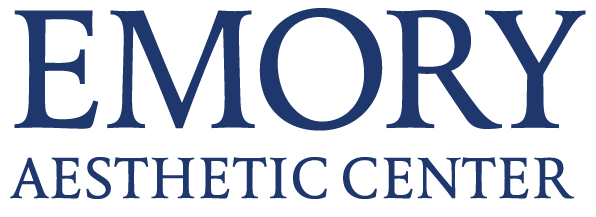While no scar can be removed completely, there are procedures available that can significantly reduce the visibility of these scars. Facial scars are often removed and repaired with tiny sutures, leaving a thinner, less noticeable scar. Dermabrasion or laser resurfacing can also be used to improve the appearance of scarring. When more extensive scars are present, Emory physicians can address these with additional treatments to the deep tissue.

Scar Revision
Scar revision and other reconstructive procedures can improve the look of scars caused by trauma (such as automobile accidents), acne, prior surgical procedures, or the removal of skin lesions.
Types of Scar Revision
Since every scar is completely unique, there are many techniques used to treat or reduce their visibility. Common treatment options include:
Surgical Revision: Surgical scar revision involves surgical removal of scar tissue, followed by closing the wound and suturing the area carefully to reduce the size and visibility of the scar. Once the new incision heals, the scar should be thinner and less noticeable. This method is used for large and/or wide scars that will not respond to less invasive revision techniques.
Laser Treatments/Dermabrasion: For depressed scars, such as acne scarring, laser or dermabrasion treatments may be appropriate. These techniques resurface and/or sand down the skin to produce a smoother and more even skin tone. These methods are best for shallow scars and depressions, and may be part of a larger scar revision treatment plan.
Steroid Injections: Steroid injections may be used as a standalone treatment, or combined with other revision methods. The treatment can reduce the size of certain scars, such as keloids (tough, thick scars that form and stick out from trauma sites), though they are not always effective on their own.
Topical Treatments: Typically used in tandem with other treatments, topical medications can help improve scars, and may be prescribed as part of a treatment plan.

Scar Revision Consultation
A consultation is an essential first step in the scar revision process. Since scars can vary in shape, size, thickness, and color, and can be located anywhere on the body, a thorough evaluation, with one of our expert cosmetic surgeons at Emory Aesthetic Center, is necessary for planning your treatment. Our surgeons will be able to recommend a course of treatment, which may include a combination of techniques. This treatment plan will be customized to you and your unique needs.
Your consultation is also a chance to get to know our providers and staff, ask questions, and refine your goals for the procedure. Be sure to address any concerns you have about the procedure during your consultation, and our surgeons will be happy to provide you with answers.
Scar Revision Candidates
Only you and a qualified cosmetic surgeon can determine your individual candidacy for scar revision procedures. Candidates should be healthy and have scarring that is either unsightly, physically uncomfortable, or causes psychological discomfort and self-consciousness. Scar revision is such a custom procedure that it can be difficult to predict the results of each treatment. Patients will need to be realistic and strive for improvement over perfection. Scar revision is not an instantaneous solution, and candidates should be prepared to be patient and give the treatment time to work, which can be a lengthy process. However, good candidates can see significant improvement in scarring, which can have an immensely positive impact on overall quality of life.
Scar Revision Procedure
Some scar revision procedures can be performed under local anesthetic and are relatively non-invasive. Surgical scar revision will vary depending on the size of the scar, but revision techniques may include repositioning the scar, removing bulk, or simply refining the incision to produce a smaller scar. Dissolving or traditional sutures will be used.
Laser treatments and dermabrasion may require some kind of anesthesia as well, depending on how in-depth the procedure will need to be. During laser treatments, precise beams of light are used to resurface and smooth the skin. Dermabrasion involves essentially sanding down the skin to erase irregularities, such as acne scar depressions. Treatments such as steroid injections and topical treatments are usually used before or after more aggressive types of revision treatments.
Scar Revision Recovery
Depending on the revision type, patients may need to devote several days to recovery. Scars will usually look worse before they look better, and the color will begin to fade once initial healing is complete. This process takes several months. During initial recovery, painkillers can be used to control any discomfort, and patients should take care to follow any instructions and activity limitations provided by their surgeon.
-
Will scar revision get rid of my scar altogether?
-
How long will I have to wait to receive scar revision?
-
How long will it take to see the results of scar revision?
-
Are there risks associated with scar revision?
-
How long will treatment take?
-
Can I receive reconstructive surgery and scar revision at the same time?
-
Can all scars be treated?
-
Can keloids come back if removed?
